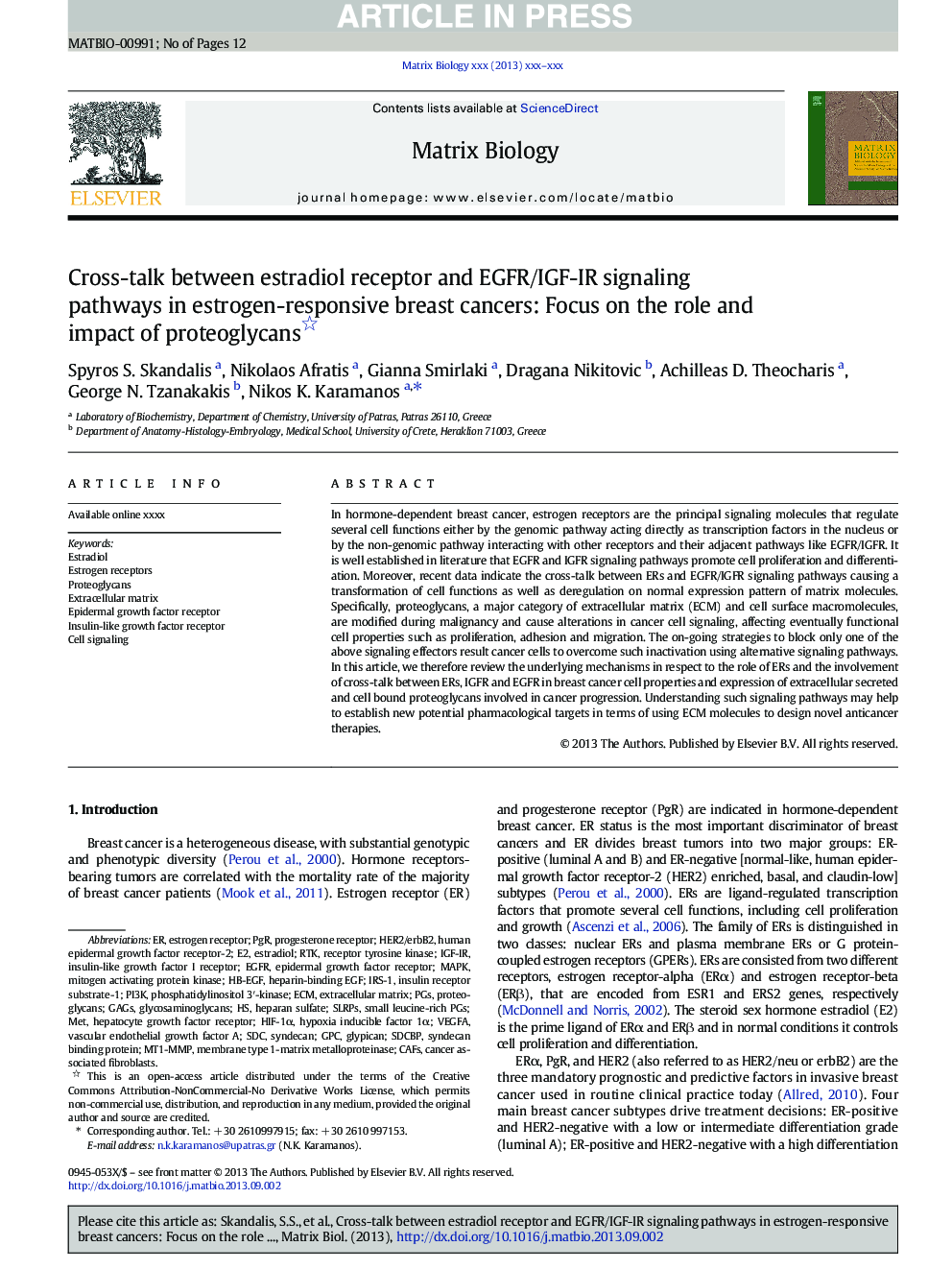| Article ID | Journal | Published Year | Pages | File Type |
|---|---|---|---|---|
| 8455371 | Matrix Biology | 2014 | 12 Pages |
Abstract
In hormone-dependent breast cancer, estrogen receptors are the principal signaling molecules that regulate several cell functions either by the genomic pathway acting directly as transcription factors in the nucleus or by the non-genomic pathway interacting with other receptors and their adjacent pathways like EGFR/IGFR. It is well established in literature that EGFR and IGFR signaling pathways promote cell proliferation and differentiation. Moreover, recent data indicate the cross-talk between ERs and EGFR/IGFR signaling pathways causing a transformation of cell functions as well as deregulation on normal expression pattern of matrix molecules. Specifically, proteoglycans, a major category of extracellular matrix (ECM) and cell surface macromolecules, are modified during malignancy and cause alterations in cancer cell signaling, affecting eventually functional cell properties such as proliferation, adhesion and migration. The on-going strategies to block only one of the above signaling effectors result cancer cells to overcome such inactivation using alternative signaling pathways. In this article, we therefore review the underlying mechanisms in respect to the role of ERs and the involvement of cross-talk between ERs, IGFR and EGFR in breast cancer cell properties and expression of extracellular secreted and cell bound proteoglycans involved in cancer progression. Understanding such signaling pathways may help to establish new potential pharmacological targets in terms of using ECM molecules to design novel anticancer therapies.
Keywords
GPCSyndecanPGSGAGsproteoglycansRTKCAFsMT1-MMPHB-EGFIRS-1IGF-IRHIF-1αSDCECMPGRVEGFAEGFRPI3Kheparin-binding EGFSLRPsMAPKEstradiolinsulin receptor substrate-1Cell signalinghypoxia inducible factor 1αVascular endothelial growth factor Aphosphatidylinositol 3′-kinaseCancer associated fibroblastsExtracellular matrixMETMembrane type 1-matrix metalloproteinaseHeparan sulfateGlypicanGlycosaminoglycansEstrogen receptorReceptor Tyrosine Kinasehepatocyte growth factor receptorEpidermal growth factor receptorInsulin-like growth factor I receptorInsulin-like growth factor receptorestrogen receptorsProgesterone receptorHuman epidermal growth factor receptor-2
Related Topics
Life Sciences
Biochemistry, Genetics and Molecular Biology
Cancer Research
Authors
Spyros S. Skandalis, Nikolaos Afratis, Gianna Smirlaki, Dragana Nikitovic, Achilleas D. Theocharis, George N. Tzanakakis, Nikos K. Karamanos,
